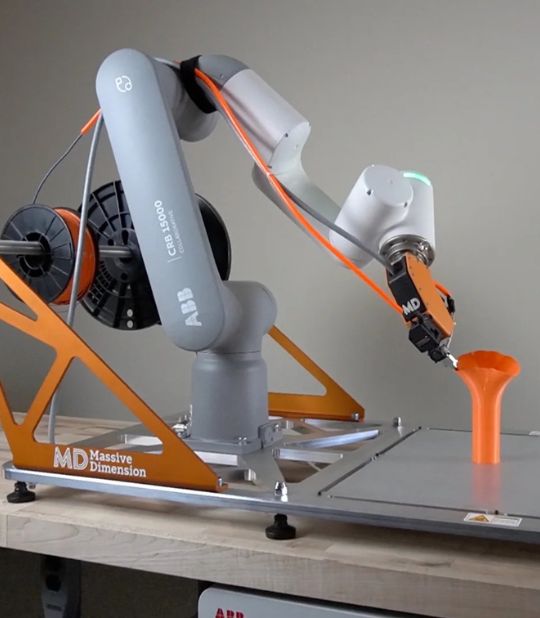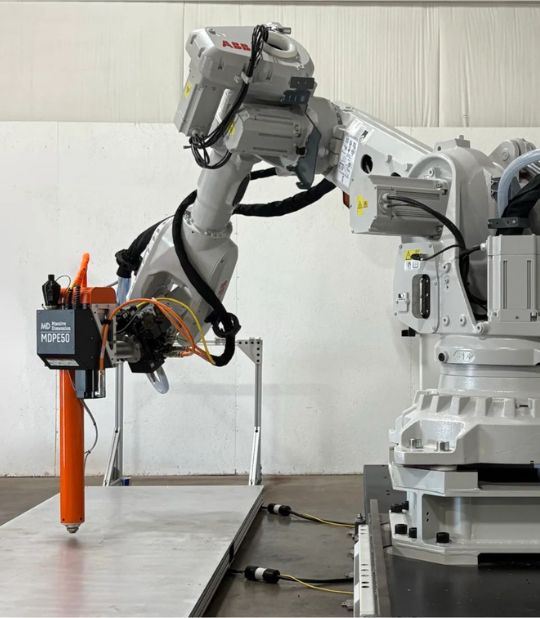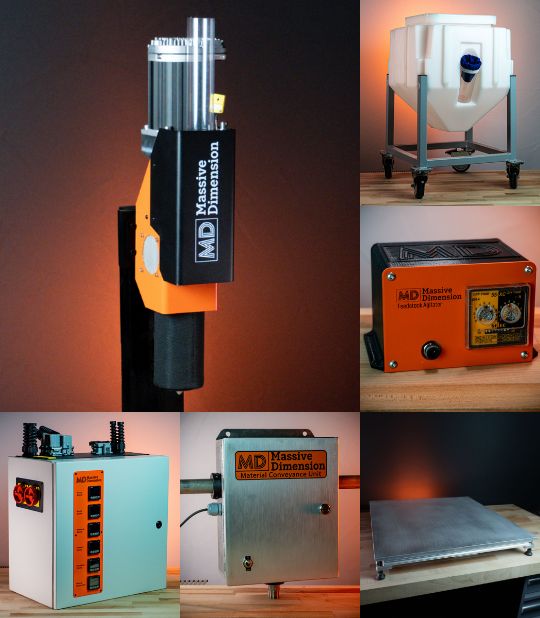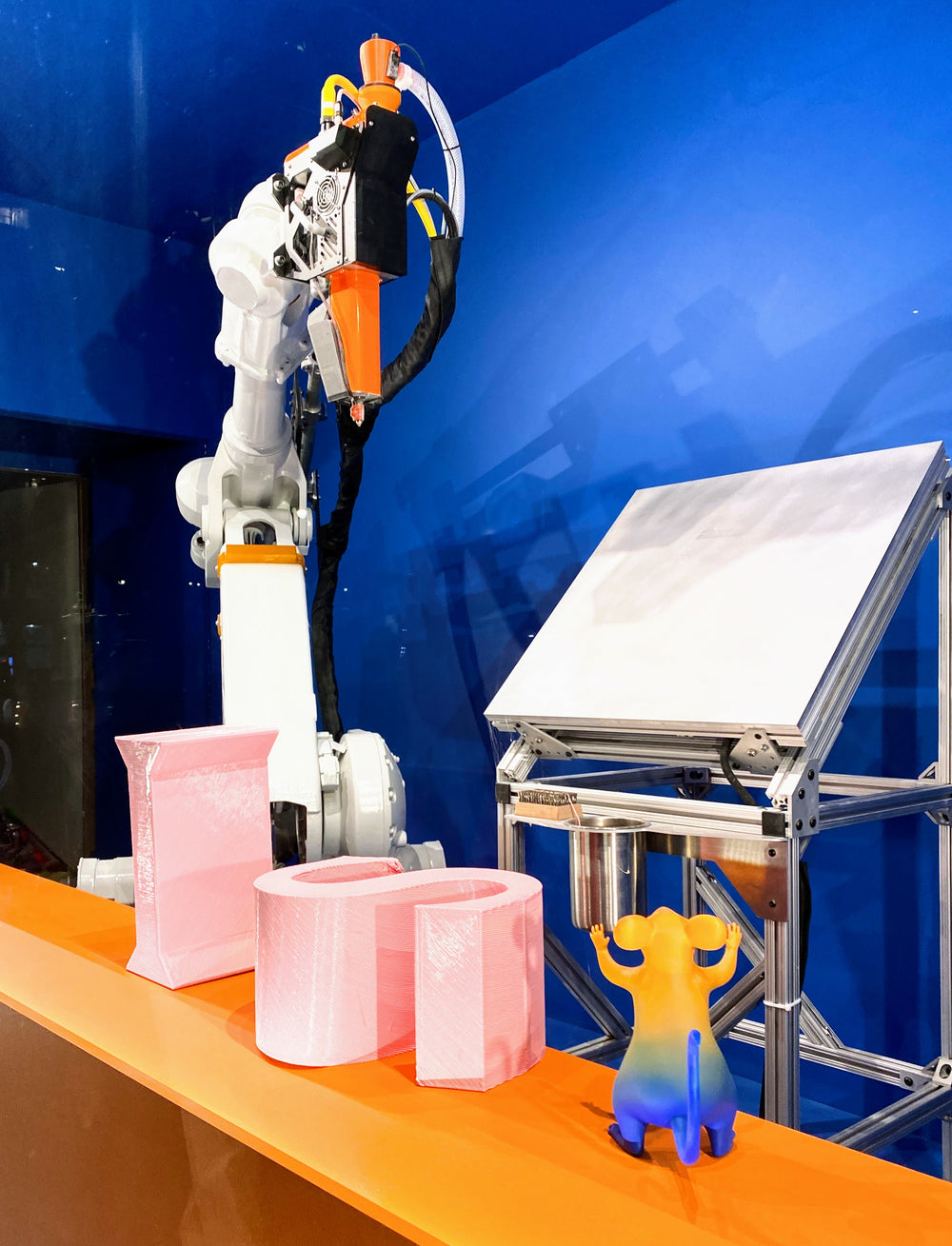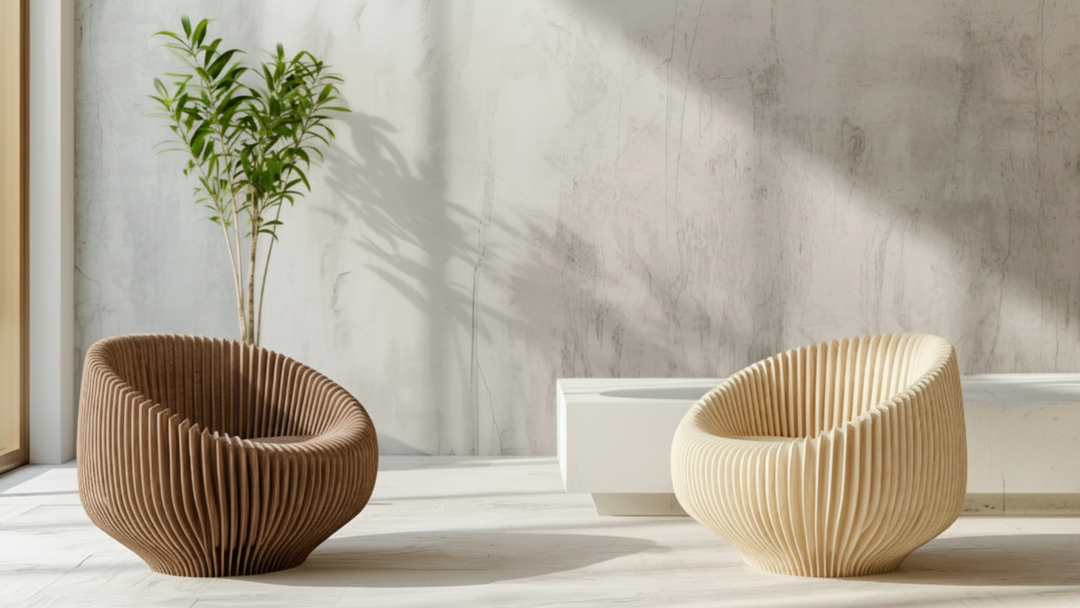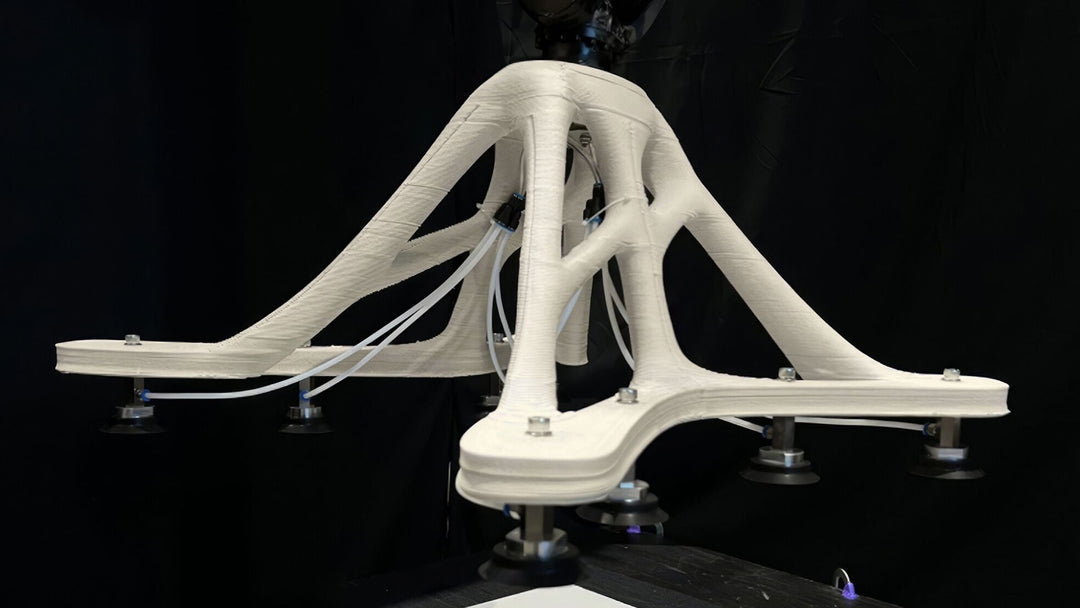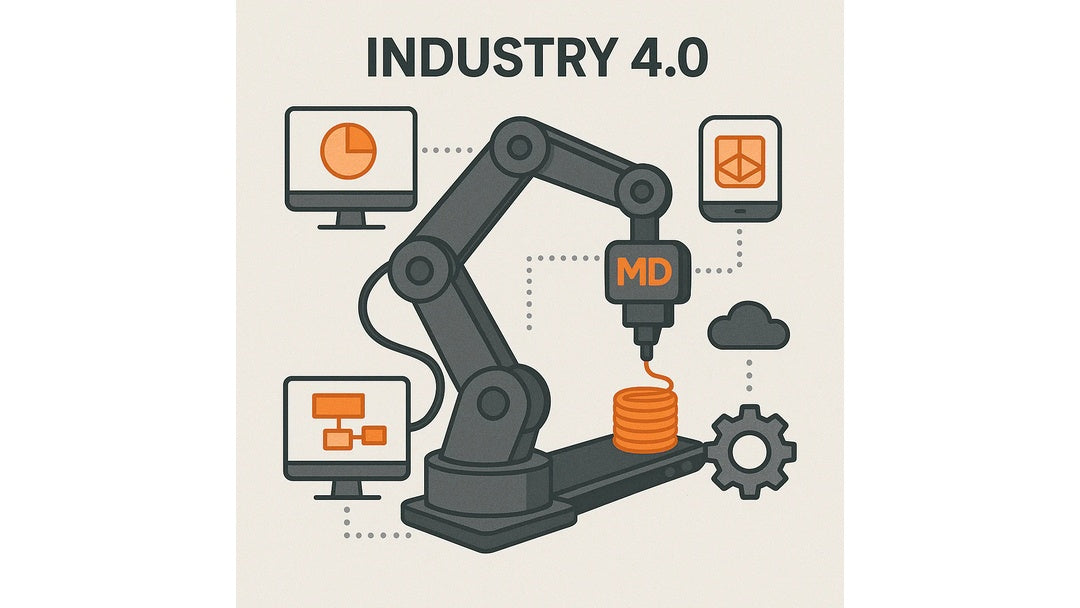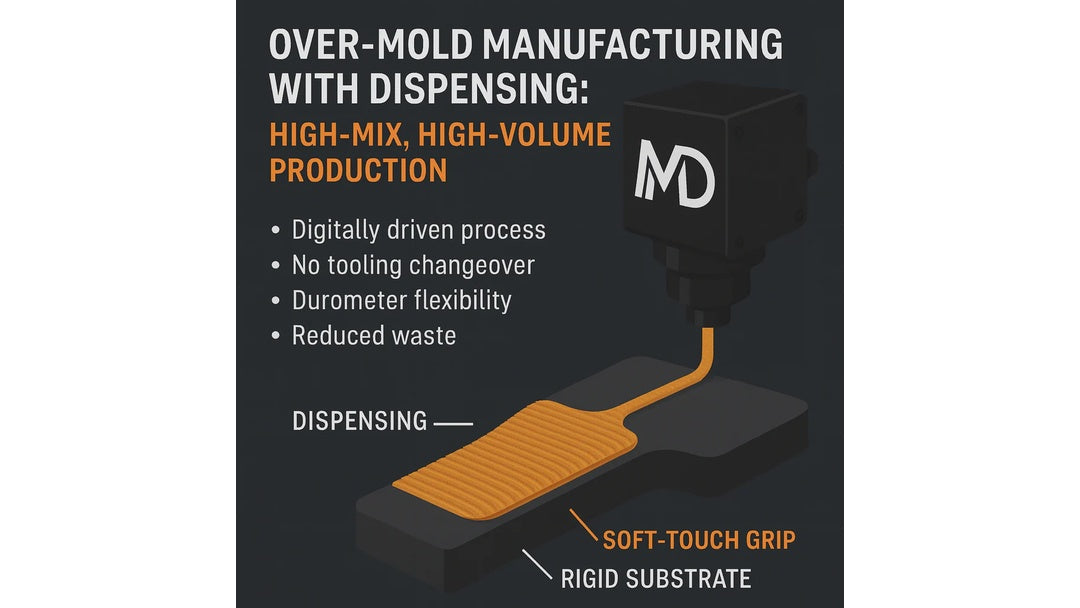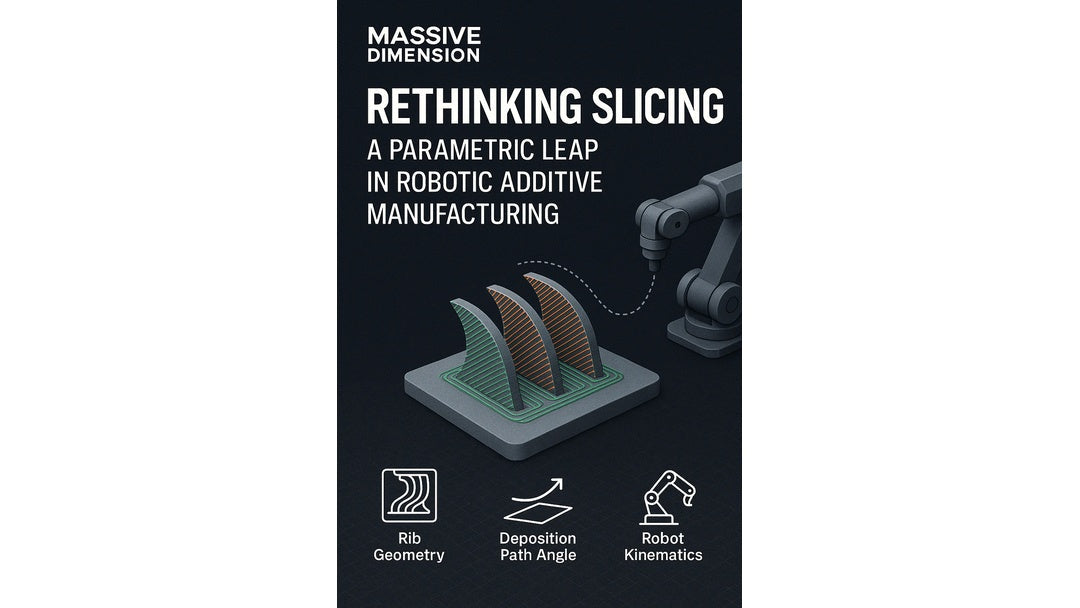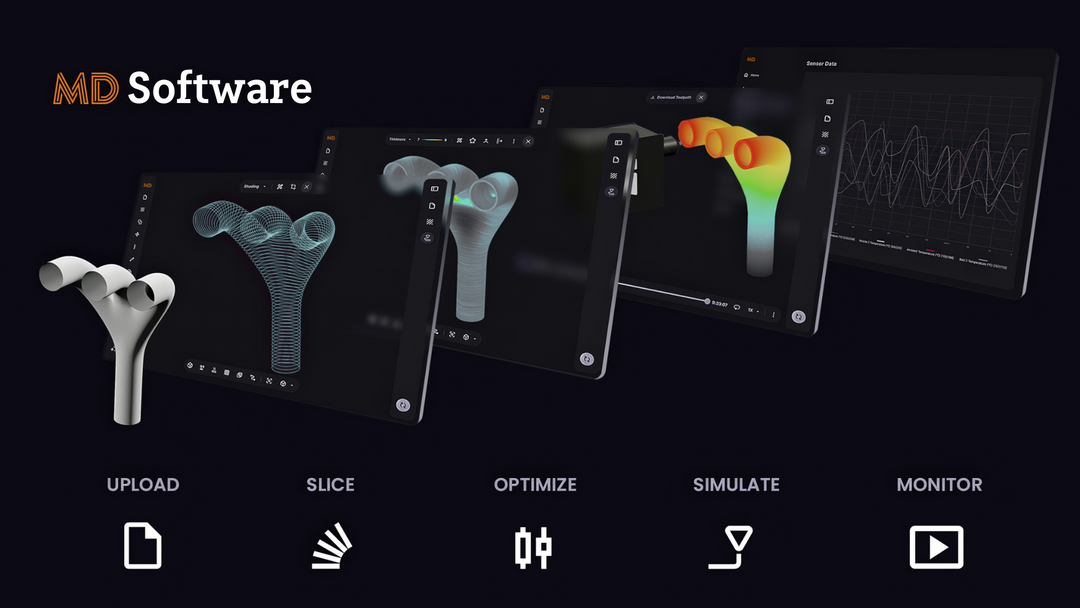University of Utah Update: Testing - Large Format Prints
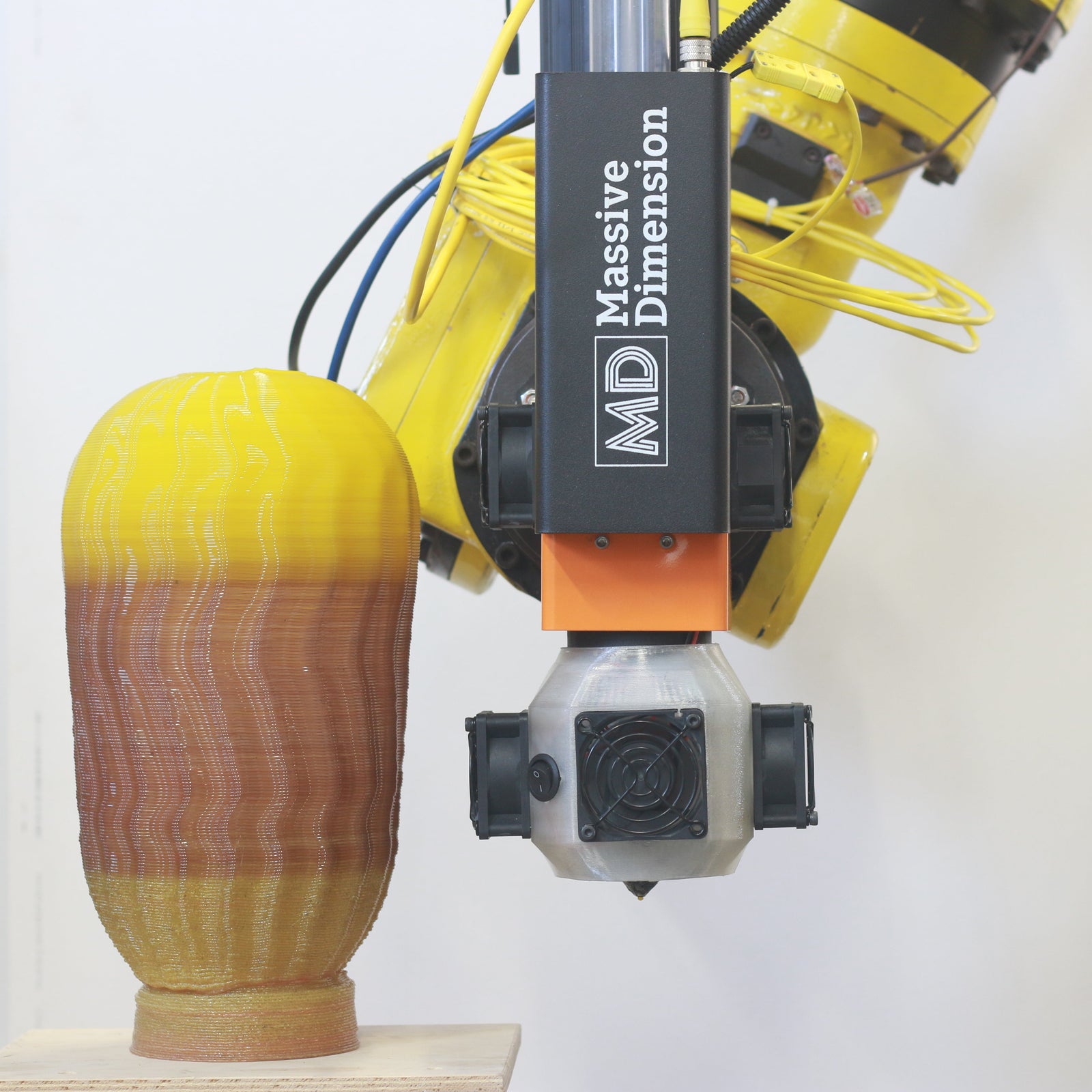
We had previously mentioned our collaboration between binaryslc, Filabot and Massive Dimension in sponsoring the fall 2020 Digital Assemblies course, instructed by Milad H. Mozari, in the Multi-Disciplinary Design Program at the University of Utah.
The last several weeks have involved exploration and experimentation with materials and creating filament using the Filabot EX2 You can read about the collaboration up to now on the Filabot website by clicking the link below:
Click here to see all Filabot posts related to the University of Utah/ Binary collaboration.
For several weeks, students in the Digital Assemblies class had been patiently awaiting the chance to realize their designs at full scale using the large-format printing capabilities enabled by the Massive Dimension MDPH2 - modified by us with a 3D-printed fan shroud for accelerated part cooling - on the robot arm in the binaryslc studio. However, before attempting these in their experimental materials, leftover recycled PETG - extra colored material from previous projects - was used to test each design at full scale so that problems with printing strategies or scaled-up geometry could be identified [image 1]. Full-scale prints were then showcased next to their scaled-down version produced on desktop machines using their initial experimentation filaments [images 2 and 3].
In parallel to these tests, material production for the final prints began in earnest! Teaching assistant @divadivadivad spent countless hours at the binary studio diligently attending to the Filabot EX2 and Filabot Pelletizer to produce the experimental materials in the quantities required for the full scale prints. With some designs requiring as much as 8 lbs of pelletized experimental material, the Filabot EX2 and Filabot Pelletizer (as well as the binary studio espresso maker!) were the workhorse machines to enable preparation of the pellets necessary for the Massive Dimension MDPH2. Storage of these materials in Mason jars [image 4] provided an interesting visual of the “experimentalist’s cupboard” of 3d printing materials with additives (L-R) including turmeric, pearlescent pigments, and magnetic iron filings!
Click here to see all Massive Dimension posts related to the University of Utah/ Binary collaboration.
Below are some photos from the experiments:








